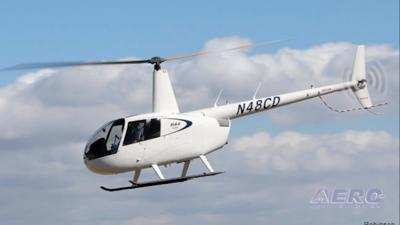Thu, Aug 09, 2018
Advertisement
More News
 ANN's Daily Aero-Term (10.14.25): Severe Icing
ANN's Daily Aero-Term (10.14.25): Severe Icing
Severe Icing The rate of ice accumulation is such that ice protection systems fail to remove the accumulation of ice and ice accumulates in locations not normally prone to icing, s>[...]
 Aero-News: Quote of the Day (10.14.25)
Aero-News: Quote of the Day (10.14.25)
“...The Airmen that work on the flight line can turn around to the shelf, grab the part, put it in the airplane, and now it’s going to perhaps be several more days befo>[...]
 ANN's Daily Aero-Linx (10.14.25)
ANN's Daily Aero-Linx (10.14.25)
Aero Linx: Alaskan Aviation Safety Foundation (AASF) Welcome to the Alaskan Aviation Safety Foundation. The foundation was created to improve aviation safety in Alaska through educ>[...]
 Classic Aero-TV: Curtiss Jenny Build Wows AirVenture Crowds
Classic Aero-TV: Curtiss Jenny Build Wows AirVenture Crowds
From 2022 (YouTube Edition): Jenny, I’ve Got Your Number... Among the magnificent antique aircraft on display at EAA’s AirVenture 2022 was a 1918 Curtiss Jenny painstak>[...]
 True Blue Power and Mid-Continent Instruments and Avionics Power NBAA25 Coverage
True Blue Power and Mid-Continent Instruments and Avionics Power NBAA25 Coverage
Mid-Continent Instruments and Avionics and True Blue Power ANN's NBAA 2025 Coverage... Visit Them At Booth #3436 101 Aviation Nears STC Approval for Lithium Battery Upgrade on Gulf>[...]
blog comments powered by Disqus




